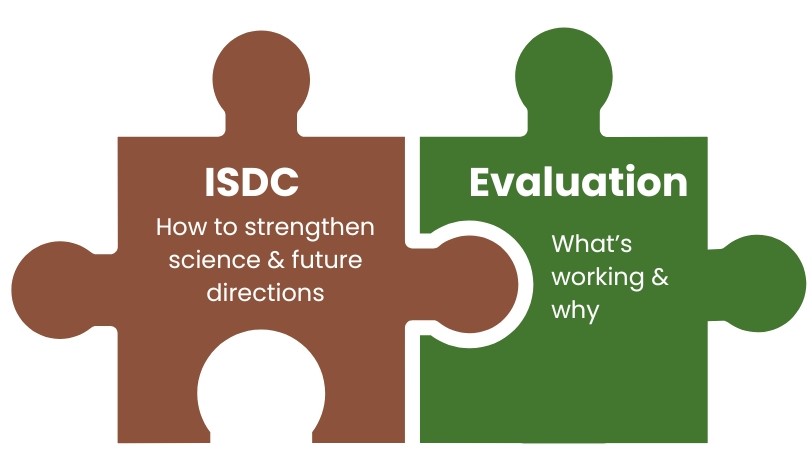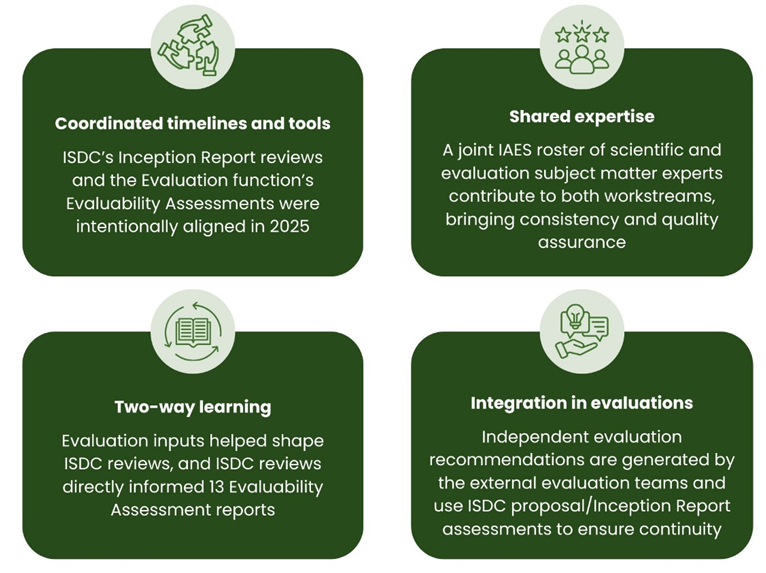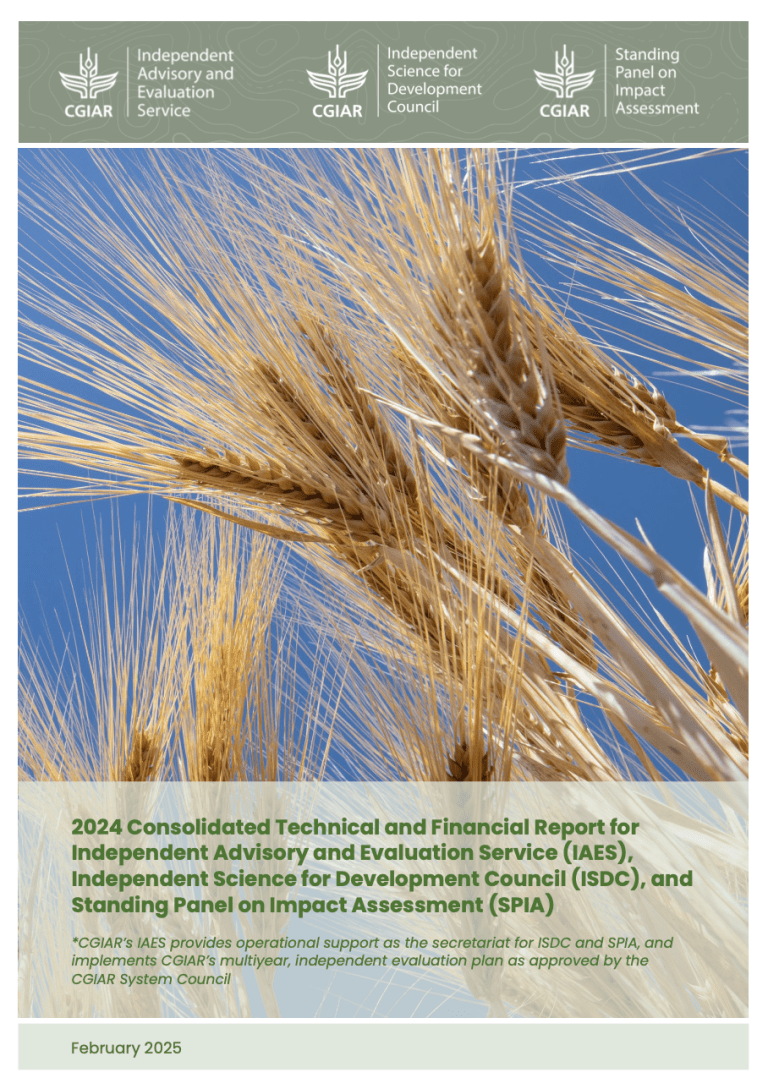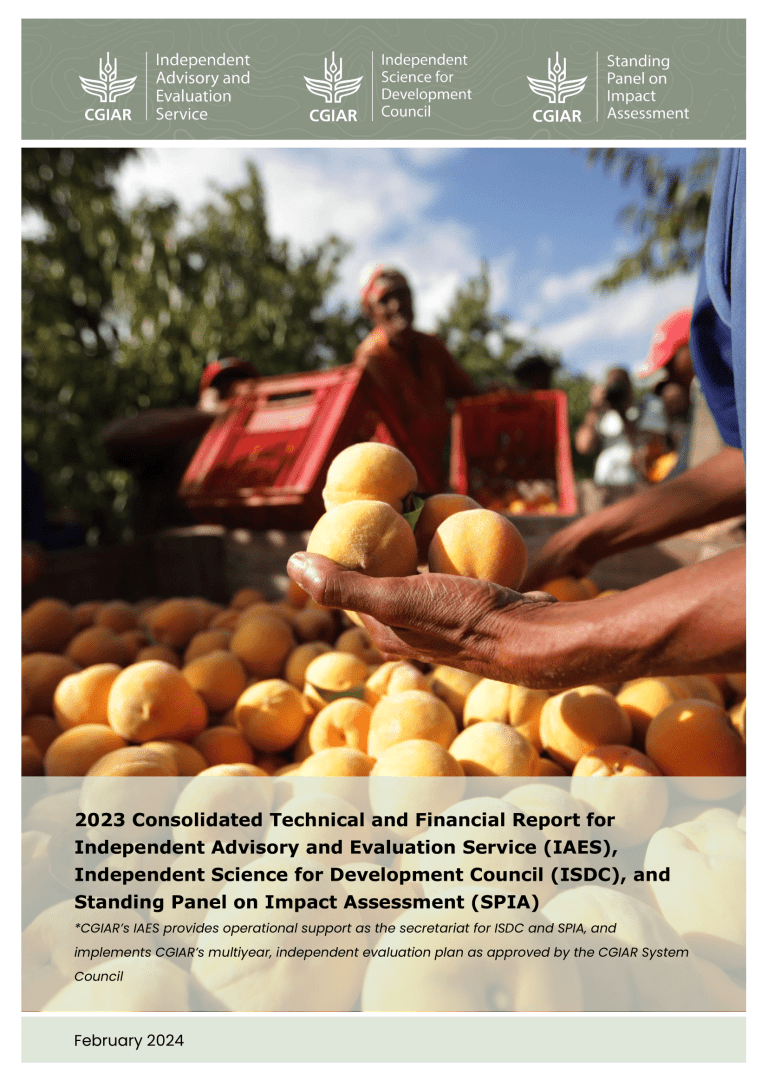Independent advice works best when it’s coordinated, transparent, and grounded in shared purpose and professional respect. Within the Independent Advisory and Evaluation Service (IAES), the Independent Science for Development Council (ISDC) and Evaluation Function have been doing exactly that by aligning strategic independent proposal and Inception Report reviews and Evaluability Assessments. This time the efforts aim to ensure CGIAR’s 2025–2030 Research and Innovation Portfolio is coherent, credible, evaluable, and ready to deliver impact.
This collaboration within IAES is not new. ISDC and Evaluation Function began aligning their work during the 2022 Portfolio process, setting a strong foundation for joint learning and complementarity. Today, as CGIAR finalizes its 2025–2030 Portfolio, that collaboration has deepened—creating a more coherent, systematic, and forward-looking approach to independent advice.
Two Perspectives, One Goal in Portfolio Advice

ISDC and Evaluation Function come at the same challenge from different angles. ISDC focuses on what’s ahead by providing strategic, science-based advice that helps ensure CGIAR research is credible, relevant, and ready to deliver impact. Evaluation Function looks at how things work in practice by assessing performance, for learning, and accountability from the Inception phase throughout implementation. Together, they offer CGIAR stakeholders both a strategic lens (how to strengthen science and future directions) and a diagnostic lens (what’s working and why).
If differences in advice or recommendations arise, they generally reflect the distinct intent, purpose, and methods of the respective workstream processes. In practice, these variations demonstrate the dynamic, multifaceted nature of scientific and organizational assessments. Both perspectives, independent and evidence-informed, are valid and valuable inputs for decision making in the design and implementation of the 2025–2030 Portfolio within CGIAR’s complex system. They are complementary parts of a complete picture.
How Collaboration Happens in Practice
Behind the scenes, this coordination plays out through shared processes, regular communication, and joint planning:

Comparing ISDC Reviews and Evaluability Assessments, 2025
Further reading resources are linked at the end of the blog
| Aspect | ISDC Proposal & Inception Report Reviews | Evaluability Assessments (2025) |
|---|---|---|
| Goal | Assess the 2025–2030 P/A proposals and later Inception Reports. Specifically, Inception Report reviews looked at if prior proposal review gaps were addressed. | Assess “evaluability” of P/As towards readiness for mid-line evaluations, to ensure systems support accountability, learning and steering (TORs). |
| Frameworks | QoR4D (Quality of Research for Development)—assessing credibility, relevance, legitimacy, and effectiveness (readiness for use). | CGIAR Evaluation and Evaluability Frameworks with 7 domains: intervention logic; MEL systems/resources; GDI; long-term evaluability; context/ environment; management and key stakeholder engagement/support; and cost-effectiveness/efficiency. |
| Engagement | Independent external review by ISDC, coordinated with the Chief Scientist’s Office. | Deep engagement with MEL staff and Program/Accelerator management through needs and self-assessments, interviews; inputs from PCU. |
| Timeline and Audience | 6–8 weeks from P/A proposals and Inception Report receipt to review delivery; review reports shared via System Council Secretariat. | 5 weeks per Program/Accelerator, inclusive of 13 light-touch EA towards ISDC reviews, full EA and Synthesis report for System Council with Management Response; |
| Outputs | ISDC Review Report and presentations to System Council and other governance bodies. | Synthesis Report with 5+ Portfolio-level recommendations; presentations to System Council and other governance bodies; 13 EA reports for adaptive management; update to SC22. |
| Management Response (MR) | Although prepared in 2024-25, it has not been standard practice within CGIAR to prepare a formal or extensive Management Response to ISDC reviews. | Required for EA Synthesis Report; tracked through Evaluation & Management Response Actions Tracker of the Portfolio Performance Unit. |
Looking Ahead
As CGIAR’s processes evolve, ISDC and Evaluation Function coordination mechanisms will align. Continuous refinement of joint IAES activities will help ensure timely, credible, and independent advice that is evidence-based and aligned with CGIAR’s mission. By maintaining this deliberate balance between strategic and diagnostic assessment, ISDC and Evaluation Function reinforce CGIAR’s ability to make evidence-informed, transparent, and forward-looking decisions across its 2025-2030 Research and Innovation Portfolio.
Resources
Evaluation
- Evaluation Framework
- 2025 Evaluability Assessments: Everything You Need to Know
- Evaluability Assessments Portal
- 2025 Science Week: IAES session with ISDC chair and DG of IRRI
- PPU: Process note and Evaluation & Management Response Actions Tracker
ISDC



